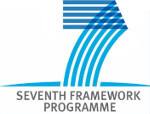Genomic differentiation between Asturiana de los Valles, Avileña-Negra Ibérica, Bruna dels Pirineus, Morucha, Pirenaica, Retinta and Rubia Gallega cattle breeds
González-Rodríguez, A. ; Munilla, S. ; Mouresan, E.F. ; Cañas-Álvarez, J.J. ; Baro, J.A. ; Molina, A. ; Díaz, C. ; Altarriba, J. (Universidad de Zaragoza) ; Piedrafita, J. ; Varona, L. (Universidad de Zaragoza)
Resumen: The Spanish local beef cattle breeds have most likely common origin followed by a process of differentiation. This particular historical evolution has most probably left detectable signatures in the genome. The objective of this study was to identify genomic regions associated with differentiation processes in seven Spanish autochthonous populations (Asturiana de los Valles (AV), Avileña-Negra Ibérica (ANI), Bruna dels Pirineus (BP), Morucha (Mo), Pirenaica (Pi), Retinta (Re) and Rubia Gallega (RG)). The BovineHD 777K BeadChip was used on 342 individuals (AV, n=50; ANI, n=48; BP, n=50; Mo, n=50; Pi, n=48; Re, n=48; RG, n=48) chosen to be as unrelated as possible. We calculated the fixation index (F ST) and performed a Bayesian analysis named SelEstim. The output of both procedures was very similar, although the Bayesian analysis provided a richer inference and allowed us to calculate significance thresholds by generating a pseudo-observed data set from the estimated posterior distributions. We identified a very large number of genomic regions, but when a very restrictive significance threshold was applied these regions were reduced to only 10. Among them, four regions can be highlighted because they comprised a large number of single nucleotide polymorphisms and showed extremely high signals (Kullback–Leiber divergence (KLD)>6). They are located in BTA 2 (5 575 950 to 10 152 228 base pairs (bp)), BTA 5 (17 596 734 to 18 850 702 bp), BTA 6 (37 853 912 to 39 441 548 bp) and BTA 18 (13 345 515 to 15 243 838 bp) and harbor, among others, the MSTN (Myostatin), KIT-LG (KIT Ligand), LAP3 (leucine aminopeptidase 3), NAPCG (non-SMC condensing I complex, subunit G), LCORL (ligand dependent nuclear receptor corepressor-like) and MC1R (Melanocortin 1 receptor) genes. Knowledge on these genomic regions allows to identify potential targets of recent selection and helps to define potential candidate genes associated with traits of interest, such as coat color, muscle development, fertility, growth, carcass and immunological response.
Idioma: Inglés
DOI: 10.1017/S1751731117000398
Año: 2017
Publicado en: ANIMAL 11, 10 (2017), 1667-1679
ISSN: 1751-7311
Factor impacto JCR: 1.87 (2017)
Categ. JCR: VETERINARY SCIENCES rank: 24 / 139 = 0.173 (2017) - Q1 - T1
Categ. JCR: AGRICULTURE, DAIRY & ANIMAL SCIENCE rank: 10 / 59 = 0.169 (2017) - Q1 - T1
Factor impacto SCIMAGO: 0.842 - Animal Science and Zoology (Q1)
Financiación: info:eu-repo/grantAgreement/EC/FP7/289592/EU/Next generation European system for cattle improvement and management/GENE2FARM
Financiación: info:eu-repo/grantAgreement/ES/MICINN/AGL2010-15903
Financiación: info:eu-repo/grantAgreement/ES/MINECO/BES-2011-045434
Tipo y forma: Artículo (Versión definitiva)
Área (Departamento): Área Genética (Dpto. Anatom.,Embri.Genét.Ani.)
 Debe reconocer adecuadamente la autoría, proporcionar un enlace a la licencia e indicar si se han realizado cambios. Puede hacerlo de cualquier manera razonable, pero no de una manera que sugiera que tiene el apoyo del licenciador o lo recibe por el uso que hace. No puede utilizar el material para una finalidad comercial. Si remezcla, transforma o crea a partir del material, no puede difundir el material modificado.
Debe reconocer adecuadamente la autoría, proporcionar un enlace a la licencia e indicar si se han realizado cambios. Puede hacerlo de cualquier manera razonable, pero no de una manera que sugiera que tiene el apoyo del licenciador o lo recibe por el uso que hace. No puede utilizar el material para una finalidad comercial. Si remezcla, transforma o crea a partir del material, no puede difundir el material modificado.
Exportado de SIDERAL (2024-11-08-10:36:52)
Visitas y descargas
Idioma: Inglés
DOI: 10.1017/S1751731117000398
Año: 2017
Publicado en: ANIMAL 11, 10 (2017), 1667-1679
ISSN: 1751-7311
Factor impacto JCR: 1.87 (2017)
Categ. JCR: VETERINARY SCIENCES rank: 24 / 139 = 0.173 (2017) - Q1 - T1
Categ. JCR: AGRICULTURE, DAIRY & ANIMAL SCIENCE rank: 10 / 59 = 0.169 (2017) - Q1 - T1
Factor impacto SCIMAGO: 0.842 - Animal Science and Zoology (Q1)
Financiación: info:eu-repo/grantAgreement/EC/FP7/289592/EU/Next generation European system for cattle improvement and management/GENE2FARM
Financiación: info:eu-repo/grantAgreement/ES/MICINN/AGL2010-15903
Financiación: info:eu-repo/grantAgreement/ES/MINECO/BES-2011-045434
Tipo y forma: Artículo (Versión definitiva)
Área (Departamento): Área Genética (Dpto. Anatom.,Embri.Genét.Ani.)
Exportado de SIDERAL (2024-11-08-10:36:52)
Enlace permanente:
Visitas y descargas
Este artículo se encuentra en las siguientes colecciones:
Artículos > Artículos por área > Genética
Registro creado el 2024-11-08, última modificación el 2024-11-08
